The Corsair H150i Elite Capellix AIO Cooler Review: Go Big Or Go Home
by E. Fylladitakis on October 15, 2020 9:30 AM EST- Posted in
- Cases/Cooling/PSUs
- Corsair
- Water Cooling
- Liquid Cooling
- RGB
- iCUE
The Corsair H150i Elite Capellix Liquid Cooler
At first sight, Corsair’s latest liquid cooler looks deceptively simple. Its massive proportions certainly are inspiring but the simplistic appearance does not hint at how advanced this cooler is. At a high level, the design is based on the standard AIO configuration of a single radiator, two hoses, and a single block that combines the copper CPU contact plate with a mini liquid pump. Corsair went with thick-walled FEP (Fluorinated Ethylene Propylene) tubing with nylon sleeve braiding instead of the usual stiff corrugated tubing, which is more flexible and aesthetically superior.
The massive 400 mm long radiator requires a case designed to hold three 120 mm fans in the row, yet also with enough clearance to fit the extra mass of the radiator itself. It is 27 mm thick, requiring a clearance of 55 mm with the fans installed in order to fit inside a system. Size aside, the radiator is the typical dual-pass cross-flow design with tiny fins soldered on thin oblong tubes, as the vast majority of AIO cooler radiators are. Due to its thickness, the radiator’s airflow resistance is low and clearly designed to perform with very little air pressure.
The main block assembly of the H150i Elite Capellix initially appears unrefined – however, the octagonal body hides a record number of thirty-three fully programmable RGB LEDs and the top plate is removable, providing extra flexibility to users. Corsair includes two top plates in the bundle, one darker and one brighter, but the relatively simple shape of the top cover allows for very easy customization if someone has access to a 3D printer or CNC. The block is powered via the Commander CORE module and has a 3-pin motherboard connector that serves only as a tachometer for speed/health monitoring.
The octagonal copper contact plate is attached to the base of the block with eight screws. Although it is not machined to a perfect mirror finish, it is very smooth and perfectly flat, which is what matters for good thermal performance. Thermal material is pre-applied to it.
Once everything is properly connected and powered, the H150i Elite Capellix becomes a canvas full of colors. The LEDs are controlled by the Commander CORE interface and lighting effects are programmable via Corsair's iCUE software. It is the presence of the Commander CORE module that makes the new H150i Elite Capellix so much more flexible than previous versions of the cooler – when combined with the now highly advanced iCUE software, the number of programming options are endless.
For example, users can stick with basic lighting effects that are purely aesthetic or program practical indicative lighting effects and/or reactions, such as temperature-dependent colors, alarms, and more. Additionally, the Commander CORE module paired with the iCUE software offers a complete synergy between all compatible Corsair devices, allowing inter-device manipulation and commands. For example, users could very well turn the Function row of a compatible keyboard into a lighting bar that indicates the RPM % of the cooler’s fans or change the cooler’s lighting colors based on which mouse profile is currently active.


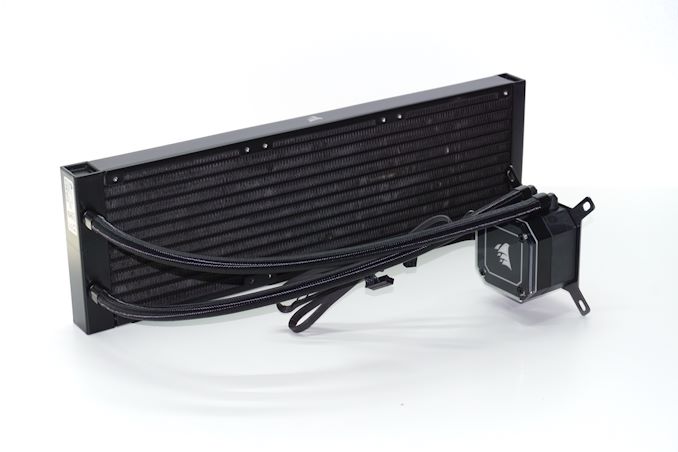
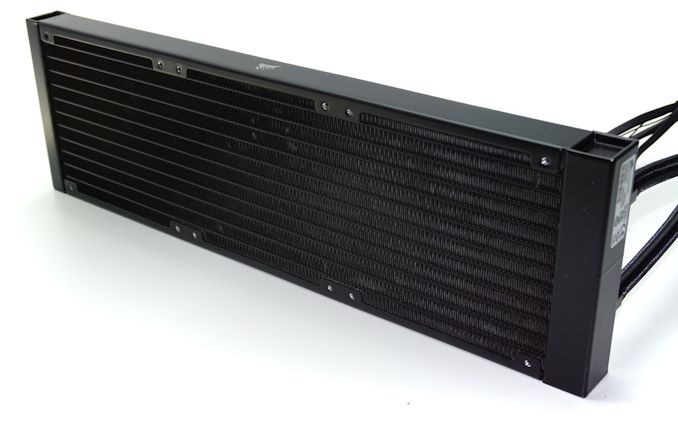
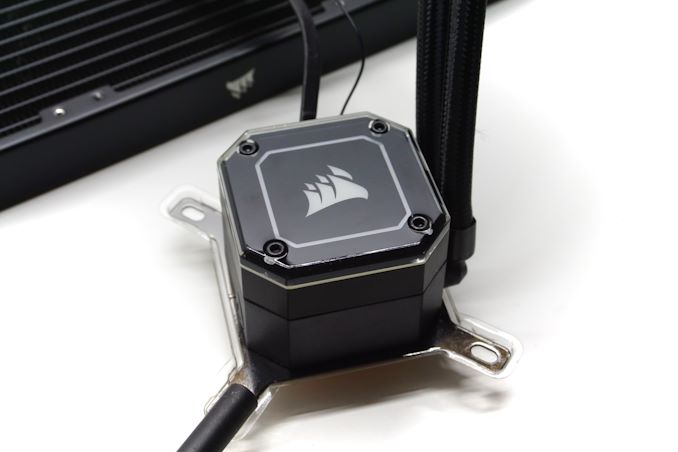
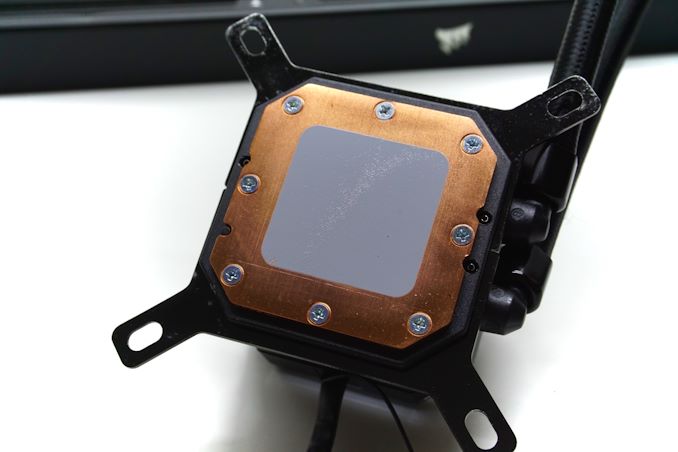
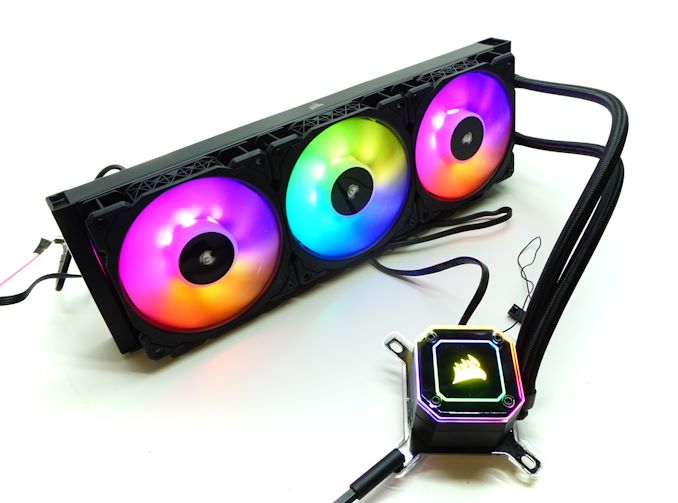





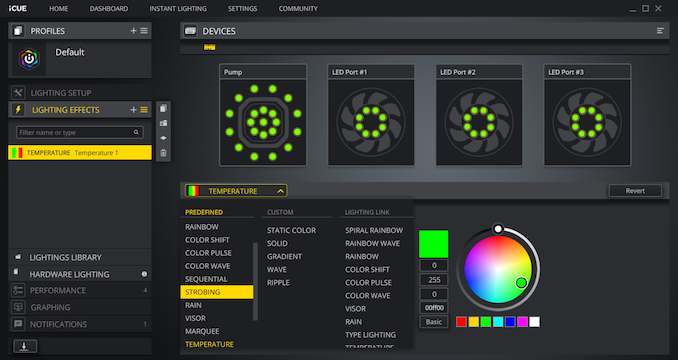








37 Comments
View All Comments
29a - Friday, October 16, 2020 - link
It has to do with the price of copper vs aluminum.Slash3 - Friday, October 16, 2020 - link
Alphacool and Be Quiet offer full copper block/rad AIOs.Quantumz0d - Thursday, October 15, 2020 - link
I think GN's test shows AiOs being somewhat superior. But as for the Air cooling vs AiO, I will always choose Air coolers. Noctua is top quality and the best part is you get a superb looking beast machine, vs the RGB vomit and cabling issues, and the most important aspect being the lifetime. AiOs always no matter what the coolant will be losing it's efficiency overtime also the particulates in the mixture. Any small leak in any time = death of the data + hard cash. No risks no half measures, only full measures = Air cooling.My build for a long term plan of a PC (usually they can last more than 10 years), will be Noctua Chromax black and red, with no RGB G.Skill B-Die, maybe the mobo / GPU gets a little lighting to make it look even intense of the coloring to match the Chromax.
StevoLincolnite - Thursday, October 15, 2020 - link
My current PC is 11 years old and uses a Corsair Hydro AIO water cooler.No issues.
TelstarTOS - Thursday, October 15, 2020 - link
The usual strategy, performance at price of high noise.Manch - Thursday, October 15, 2020 - link
Short of making the radiator bigger, would adding a reservoir help cooling at this point?Everett F Sargent - Thursday, October 15, 2020 - link
Yes, of course. As long as the reservoir is big enough. Ideally you want the coolant to return to its initial ambient temperature. The major problem with all liquid cooling solutions is an inherent inability to return the coolant back to its original ambient temperature. All you have to do is try to touch the radiator or use an IR digital thermometer.The equation is as simple as Q=VA (Q is the flow rate in liters per second) and the coolant volume or total amount of coolant in the loop, VC = liters, so that VC/Q = seconds or mean residence time, the bigger that number the better chance you have of returning the coolant to its original ambient temperature. The goal is to maintain the maximum delta temperature between the coolant and the CPU. Hot (to the touch or via IR thermometry) radiators defeat the entire exercise (or some fraction thereof) to begin with in the 1st place.
Tomatotech - Friday, October 16, 2020 - link
You are correct in that coolant volume is a factor, however heat flow rate from the radiator is also a large factor. For the same size radiator, factors affecting heat flow would be: thermal conductivity of the radiator, exposed surface area of the radiator, airflow across the radiator. If any of these are very high then cooling* will be effective even with tiny coolant volume.*Reduction of increase in temperature above internal working temperature of CPU. Over time, all radiator systems, even maximally efficient ones, will reach a temperature of at least the internal temperature of the CPU.
Everett F Sargent - Friday, October 16, 2020 - link
Yes there are many factors, but I think my basic claim still holds true. Keeping the coolant temperature low is a must, or preferred, all other things being equal. But I think I will do a little more on quantifying those calculations with my new build.Everett F Sargent - Thursday, October 15, 2020 - link
Go bigger or go home ...https://www.performance-pcs.com/water-cooling/aio-...
Currently out of stock as I got the last one.